I think the best word to explain Venice is ‘Tidal’. Let me explain in a number of contexts.
Obviously Venice is located in an estuarine lagoon, nominally called a group of islands, in truth this city is a cluster of reinforced platforms that are built upon piles driven deep into the underlying mud. Already close to sea level, it relies on its waterways for the movement of nearly everything as the city grows nothing, farms nothing and produces little except an insatiable appetite for food, wine and stylish goods. The milkman and the garbage men have barges that weave among the canals daily, food and goods are transported this way as it is totally impractical to distribute this stuff any other way. As part of an estuary, fishing is big business, as such they are at pains to protect their waterways and have strict environmental enforced guidelines in place to ensure the quality of the water both in the canals and the lagoon more generally. 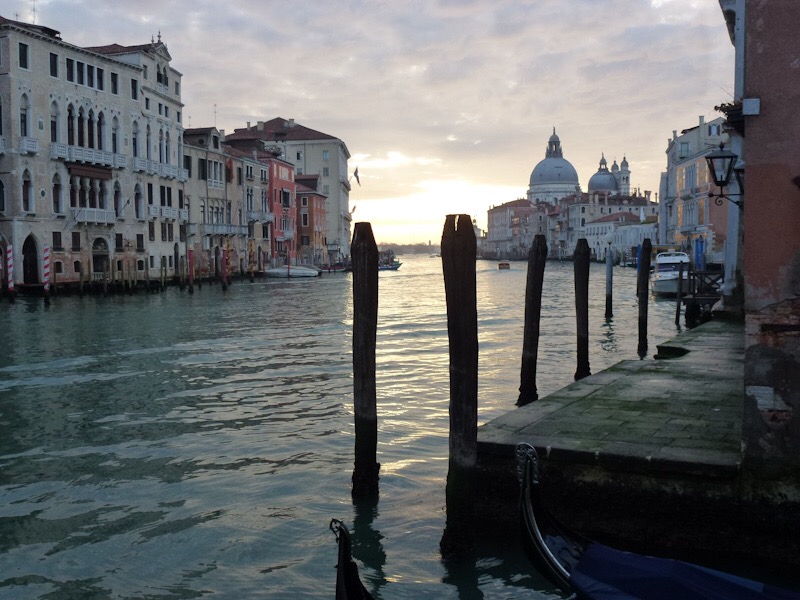
Venice, however, is in trouble. We see evidence of it all around us. During high tides (we have now seen a few of them this visit) lower areas are inundated by salt water that oozes from the cobbles. They use raised platforms in the worst effected areas to elevate pedestrians and stainless steel barriers at doors of buildings to stop the salty influx. Architecturally, Venice is unique. All buildings have an impervious “damp course” layer of marble which you can see clearly. In the past this layer has been well below ‘oyster level’ but things have changed. Above this is brick and stone which are porous and all being well this has worked well for centuries. But … rising sea levels and gentle sinking of the buildings mean that the damp course is often below water level, allowing salt water to rise in the porous layers above and this is disastrous. Brick buckles, flakes and disintegrates, other stonework expands, walls slump and shit happens.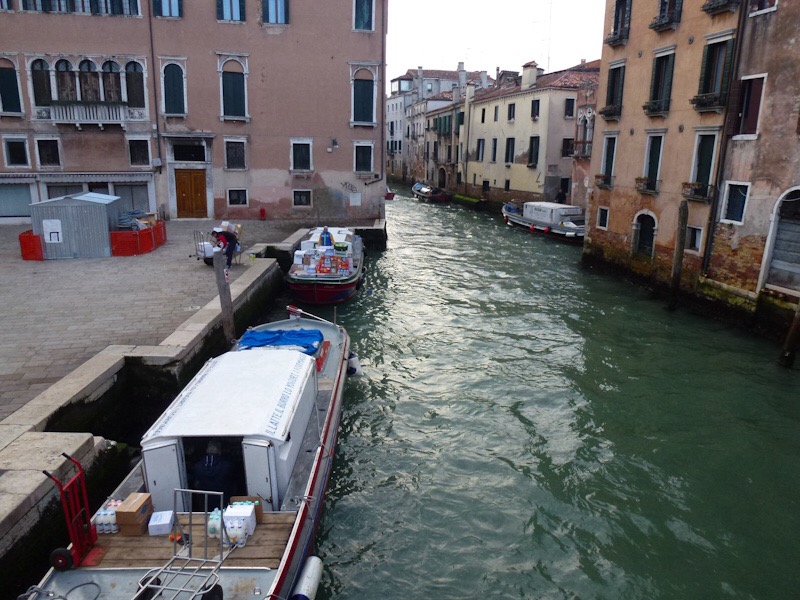
Lots is being done and it is a battle against time, the elements and extensive existing damage. Many buildings are now uninhabitable on their ground levels and things do not look good for this beautiful city.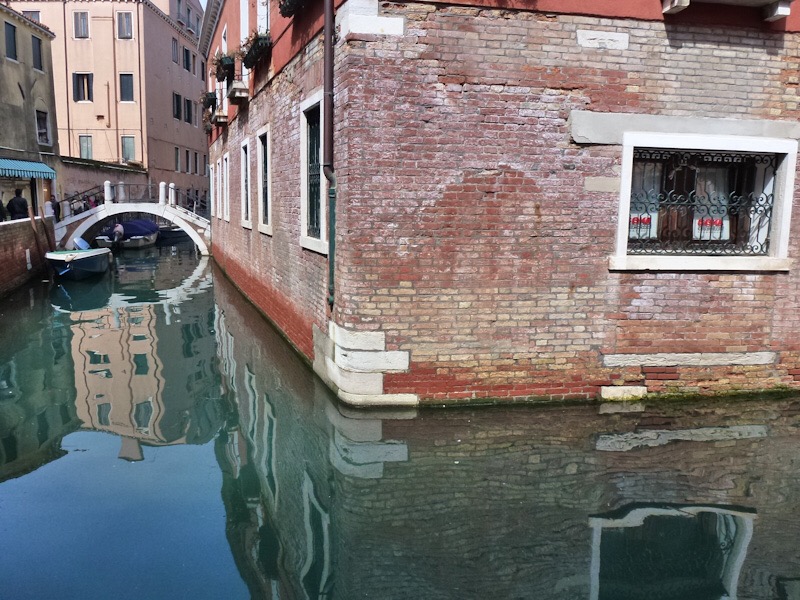
Venice is also tidal in population. Relatively few people still live in Venice, most tourists live on the mainland and travel to the islands as day trippers and we have witnessed monumental waves of people arrive after about 10am, and leave about 6pm. Outsides of these times the streets are relatively empty. We have done a lot of our exploring in the early or late hours and the city at these times is just lovely.
When faced with the crush of humanity, however, at lunchtime it is not nice, at all. Tourists (yes, I know we are tourists also) are selfish and time poor- as such they jostle, push in, drop crap everywhere, do not understand your non-appreciation of their dog or the messes they make, photobomb everyone, stop mid step in a busy walkway, chase a bargain, eat everywhere and keep the economy of this city going.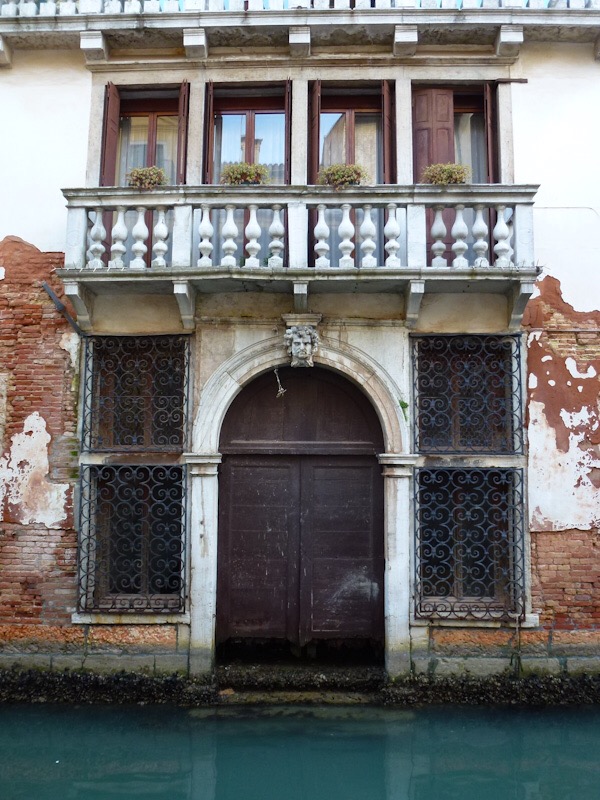
Locals are locked in a love-hate relationship with the tides of tourists. Their economy needs them, their city and culture does not. Waves of tourists surge from point to point, places off the beaten track maintain much to the charm of the area but to stay in business the pressure to sell the homogenous (made in China) crap is huge. It is all interesting.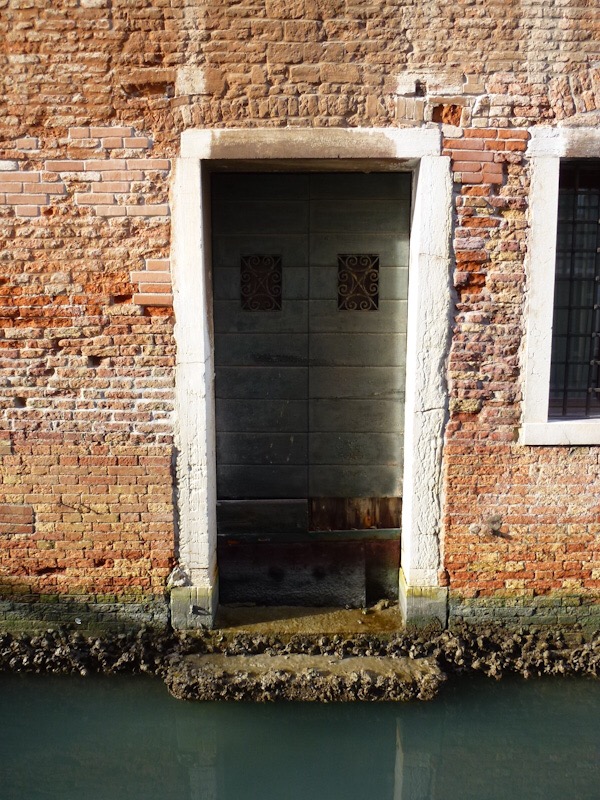
We have found charming oases in parts of the city far from cruise ship landing points and ferry stops but you have to look for them. Getting lost in Venice continues to be a joy, we have much exploring to do and if you are planning on visiting you should, as global warming continues to challenge its very existence.


One Response to Tidal